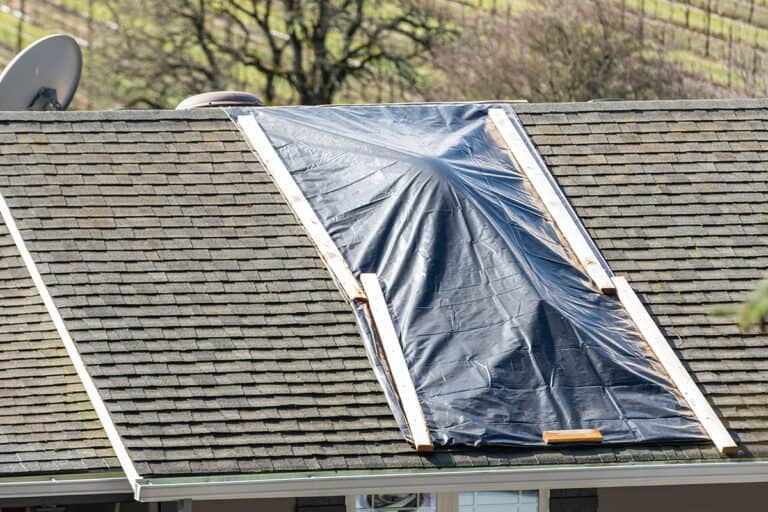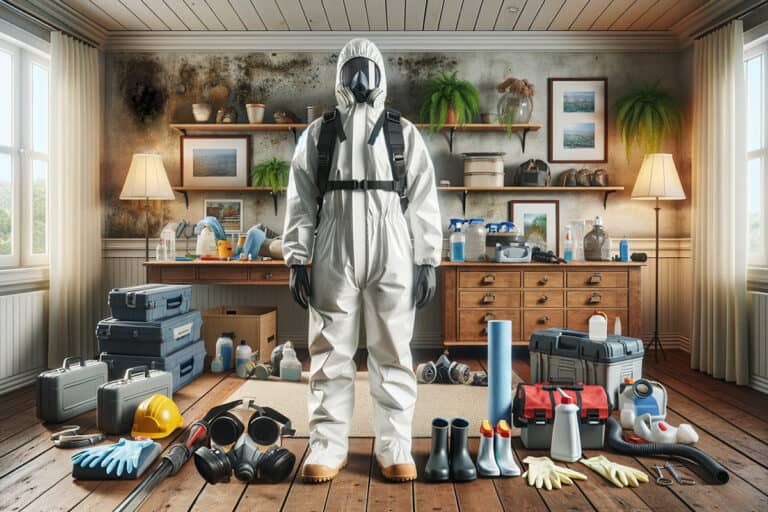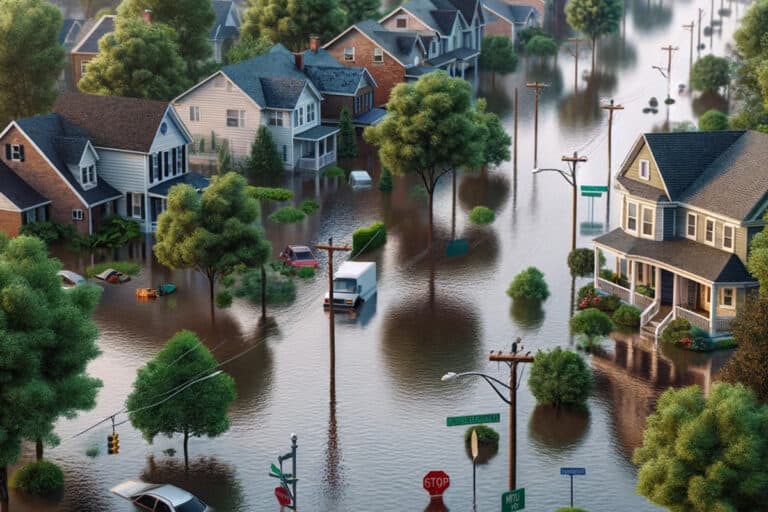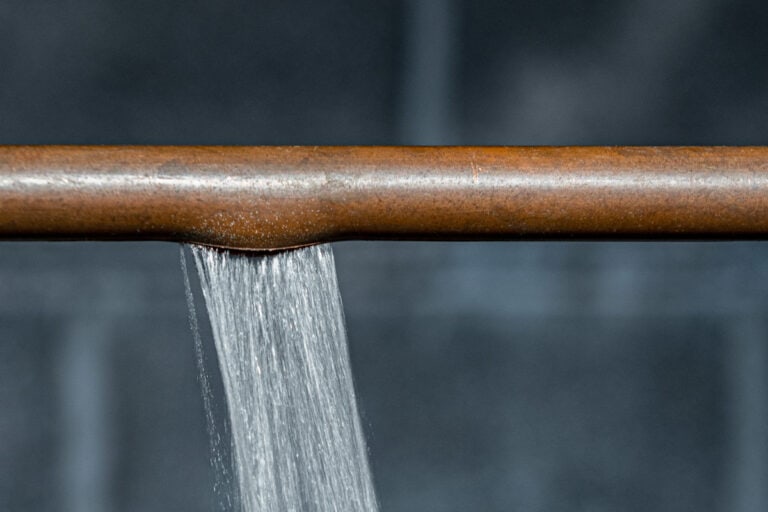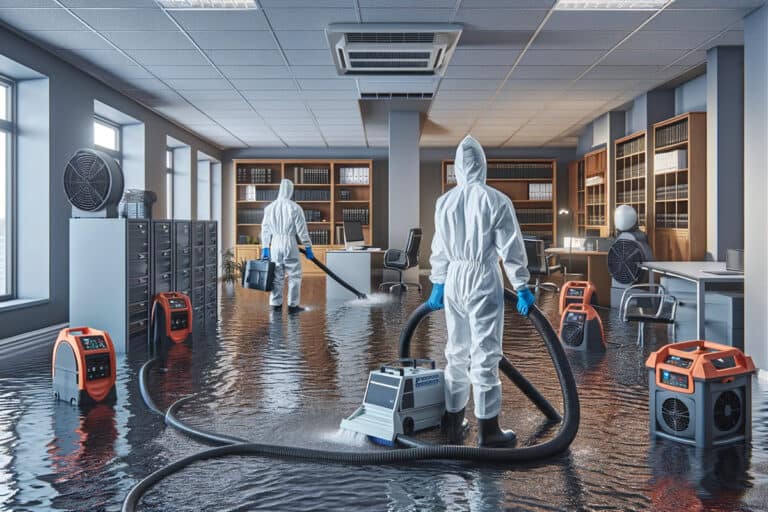Disclosure: I am compensated for purchases made through some links on this site. Click for details.
Water damage to a property from events like floods or leaks can usher in a host of challenges, not least among them being the potential for mold and other contaminant growth. One of the crucial stages in the remediation process is the thorough cleaning of the affected areas, which often involves the use of a HEPA vacuum. A HEPA vacuum, equipped with a high-efficiency particulate air filter, can effectively remove the minute particles and allergens that standard vacuums might recirculate back into the environment.
Before operating a HEPA vacuum, a few preliminary steps must be performed to ensure maximum effectiveness. It’s important to inspect the area for visible mold growth, structural damage, and to determine the water contamination category. Afterward, the affected areas should be dried and any unsalvageable materials removed. Proper HEPA vacuuming techniques can then be employed, focusing on thorough coverage without dispersing contaminants back into the air.
Key Takeaways
- HEPA vacuums are essential in removing contaminants post-water damage.
- Pre-cleaning steps are necessary to prepare for effective HEPA vacuuming.
- Correct vacuuming techniques aid in thorough cleanup and prevent further spread of contaminants.
Understanding Water Damage and Mold Growth
Effective water damage restoration is critical in preventing mold growth, which can significantly impact indoor air quality and health. It’s important to understand the types of water damage and related safety concerns to effectively use a HEPA vacuum during the cleanup process.
Categories of Water Damage
When dealing with water damage, one must recognize the three categories that define the source’s level of contamination:
- Category 1: Clean Water – This water originates from sanitary sources and does not pose an immediate health risk.
- Category 2: Grey Water – Contains significant contamination and has the potential to cause discomfort or sickness if contacted or consumed.
- Category 3: Black Water – This is highly contaminated, potentially containing harmful agents such as bacteria and fungi, and requires immediate action.
Health and Safety Concerns
Exposure to water-damaged environments raises several health and safety issues:
- Mold Spores: These microscopic spores thrive on moisture and can quickly proliferate, degrading indoor air quality.
- Health Impact: Individuals may experience allergic reactions, asthma attacks, or other respiratory issues from inhaling or coming into direct contact with mold.
- HEPA Vacuum: To maintain safety and effectively remove mold spores, a HEPA vacuum is essential for capturing particles without releasing them back into the air.
Basics of HEPA Vacuuming After Water Damage
Following water damage, utilizing a HEPA vacuum is an effective way to remove contaminants and restore a clean environment. Ensuring the efficiency and thoroughness of cleanup efforts, HEPA vacuums are indispensable tools in the water damage restoration process.
What Is a HEPA Vacuum?
A HEPA vacuum is a type of vacuum cleaner that includes a high-efficiency particulate air (HEPA) filter. This filter is designed to trap at least 99.97% of particles that are 0.3 microns in size, ensuring that even the smallest contaminants are captured during the cleaning process. The construction of HEPA vacuums allows them to contain toxic particles without redistributing them into the air.
Significance of HEPA Filtration
HEPA filtration is critical in the aftermath of water damage for several reasons:
- It helps to maintain air quality, preventing health problems that can arise from inhaling mold spores, dust, and other particulates.
- A vacuum with HEPA filters ensures a higher standard of cleaning, which is especially crucial in environments where water damage has occurred.
- By using a HEPA vacuum, restorers can reduce the spread of contaminants, directly contributing to a safer and cleaner restoration process.
Pre-Vacuuming Steps
Before deploying a HEPA vacuum in water damage restoration, it is critical to first remove excess moisture and establish containment. These initial steps are foundational for a safe and effective cleanup process.
Water Removal and Drying
Once water damage occurs, the immediate focus should be on removing standing water and drying out the area. This often involves extracting water using pumps or wet vacs and promoting rapid drying with dehumidifiers and air movers. Ensuring that the area is as dry as possible helps prevent the spread of moisture to unaffected areas and prepares surfaces for HEPA vacuuming.
Containment and Prevention
Containment is essential to prevent cross-contamination of unaffected areas during the restoration process. Through the careful setup of plastic sheeting and negative air pressure, professionals can isolate the damaged space. Before vacuuming, they conduct thorough investigations to identify areas of moisture that may not be immediately visible. Only after these steps are taken should HEPA vacuuming commence.
HEPA Vacuuming Techniques
Using a High-Efficiency Particulate Air (HEPA) vacuum is essential in mitigating water damage as it ensures the removal of particles without dispersing them back into the air. The approach varies depending on the materials and surfaces involved.
Dry Vacuuming
Dry vacuuming is the primary step in the cleanup process of water damage restoration, especially for surfaces that have been dried. It involves running a HEPA vacuum over all affected areas to remove any loose particles. The vacuum should have a sealed system to ensure no escape of fine particles.
Wet Vacuuming
Wet vacuuming comes into play when materials are still damp. Users should ensure that the HEPA vacuum is designed for wet surfaces to avoid damage to the equipment. This technique helps to remove water and small particles simultaneously.
Vacuuming Porous and Non-Porous Materials
When vacuuming porous materials like fabrics and upholstery, care should be taken not to push contaminants deeper into the fibers. For non-porous surfaces such as plastics and metals, vacuuming can be more straightforward, but all surfaces should be passed over multiple times to ensure all particulates are captured.
Cleaning and Disinfecting Post-Vacuuming
After using a HEPA vacuum to address water damage, one must perform thorough cleaning and disinfection to eliminate any lingering contaminants and prevent mold growth. This stage is critical in mold remediation, ensuring that the area returns to a safe and healthy environment.
Sanitization Process
To begin sanitizing, one should utilize a solution of chlorine bleach diluted with water, adhering to the recommended ratio for safe and effective use. Damp wiping is an effective method for applying disinfectant to non-porous surfaces, as it allows direct contact with contaminants without dispersing them into the air. After applying the sanitization agent, it is essential to allow the area to dry completely, which may require a drying period of several hours.
Targeting Hidden Mold
Confronting hidden mold requires a meticulous approach, as it often thrives in unseen areas where moisture persists. To tackle these challenging spots, one should investigate behind wall cavities, under flooring, or within HVAC systems, as these are common havens for mold following water damage. Disinfectants like diluted bleach can be used on applicable surfaces, but materials like drywall or insulation that harbor mold may need complete removal and replacement.
Best Practices for HEPA Vacuuming
Using a HEPA vacuum for cleanup after water damage can significantly reduce the presence of mold and other contaminants. It’s crucial to handle the vacuum properly and maintain its bags efficiently to ensure optimal performance during mold cleanup methods.
Proper Handling and Movement
One should always operate the HEPA vacuum with care to prevent scattering mold spores. It’s imperative to move the vacuum slowly over the affected area, allowing it to thoroughly capture particulates. Avoid aggressive back-and-forth movements, as this may release contaminants into the air.
Vacuum Bag Maintenance
To maintain the efficiency of a HEPA vacuum, regular bag checks are essential. The bags should be replaced when they become half-full, as overstuffed bags can reduce suction efficiency and potentially lead to spore dispersion. When disposing of vacuum bags, they must be sealed properly to avoid reintroducing the contaminants into the environment.
Restoration and Repairs
Restoration after water damage involves a thorough assessment and repair of affected materials. Key structural components like drywall and wood require careful attention to ensure the integrity and safety of the property.
Dealing With Drywall and Ceiling Tiles
After water damage, drywall and ceiling tiles can absorb moisture, leading to structural weakening and potential mold growth. Drywall may need to be cut out and replaced, especially if waterlogged. Inspectors assess the extent of the moisture penetration using moisture meters and infrared cameras. They then remove and replace compromised materials, taking care not to disturb undamaged areas.
Related Content: Mold on Ceiling: A Step-by-Step Guide to Effective Removal
Wood and Structural Repairs
Wooden structures that have been exposed to water can warp, swell, or rot. Restorers will diligently assess each piece for integrity, removing and replacing damaged portions as necessary to preserve the structural stability of the property. A HEPA vacuum is commonly employed to remove fine particulates and prevent the spread of contaminants during the repair process.
Safety Measures and Personal Protection
When addressing water damage, safety measures and personal protection are critical to prevent hazardous exposure. It is essential to use appropriate personal protective equipment and establish negative pressure environments to safeguard health and well-being.
Using Personal Protective Equipment
Personal protective equipment (PPE) is the first line of defense against the potential hazards that can arise during post-water damage cleanup. Individuals must wear an N-95 respirator or a more comprehensive respirator to protect from airborne particles. Safety glasses or protective goggles should be employed to shield the eyes from irritants, and protective clothing like gloves and coveralls should be worn to avoid direct skin contact with contaminants. By using PPE correctly, workers can minimize their exposure to mold, chemicals, and other particulates that are present following water damage.
Establishing Negative Pressure Environments
Creating a negative pressure environment is a pivotal measure to reduce the spread of airborne contaminants during the cleanup process. Negative pressure ensures that any disturbed pollutants are contained, primarily when using a HEPA vacuum. This is achieved by using air filtration devices such as Portable Air Scrubbers that have been designed to generate a controlled flow of air. By keeping doors closed and sealing off the workspace from other areas, they can further ensure that cleanup efforts are safe and effective.
Conclusion
In the restoration industry, the use of a HEPA vacuum is a standard practice backed by rigorous certification and protocols. It ensures that contaminants are thoroughly removed from environments affected by water damage, safeguarding the health of residents and workers. Adherence to established cleaning methodologies is critical for effective restoration.
Professionals are trained in the proper use and handling of HEPA vacuums to maximize efficiency and ensure that potentially harmful particles are contained. Following protocol not only streamlines the cleaning process but also provides a benchmark for quality control. This makes certain that restoration efforts meet the high standards set by certification bodies.
In summary, the inclusion of HEPA vacuuming in water damage scenarios reflects the industry’s commitment to excellence and safety. Its role is pivotal in the restoration process, offering a meticulous approach to eliminating unwanted particles from the indoor environment. Restoration teams equipped with this knowledge and technology reassure clients through their professionalism and attention to detail.

